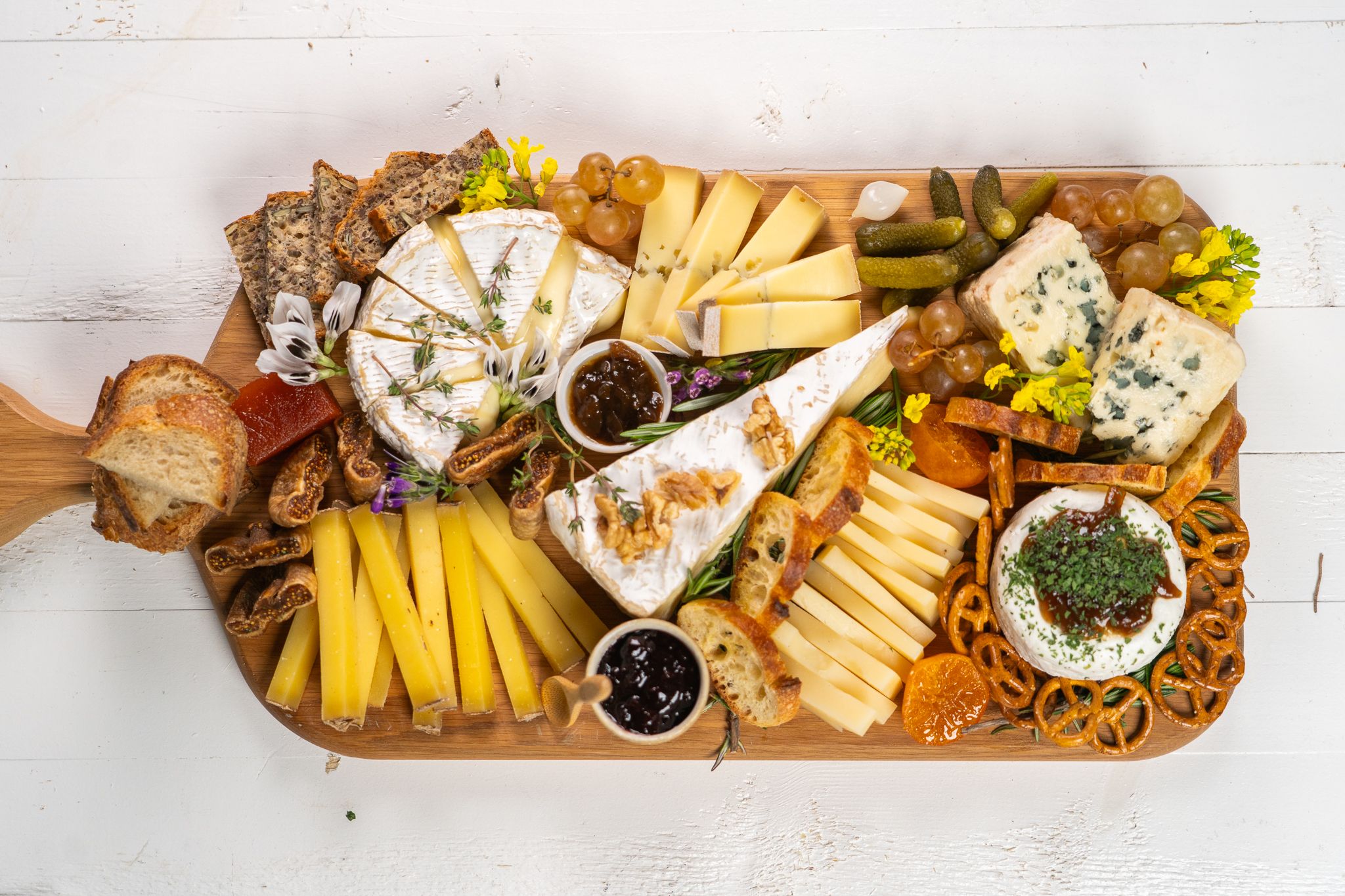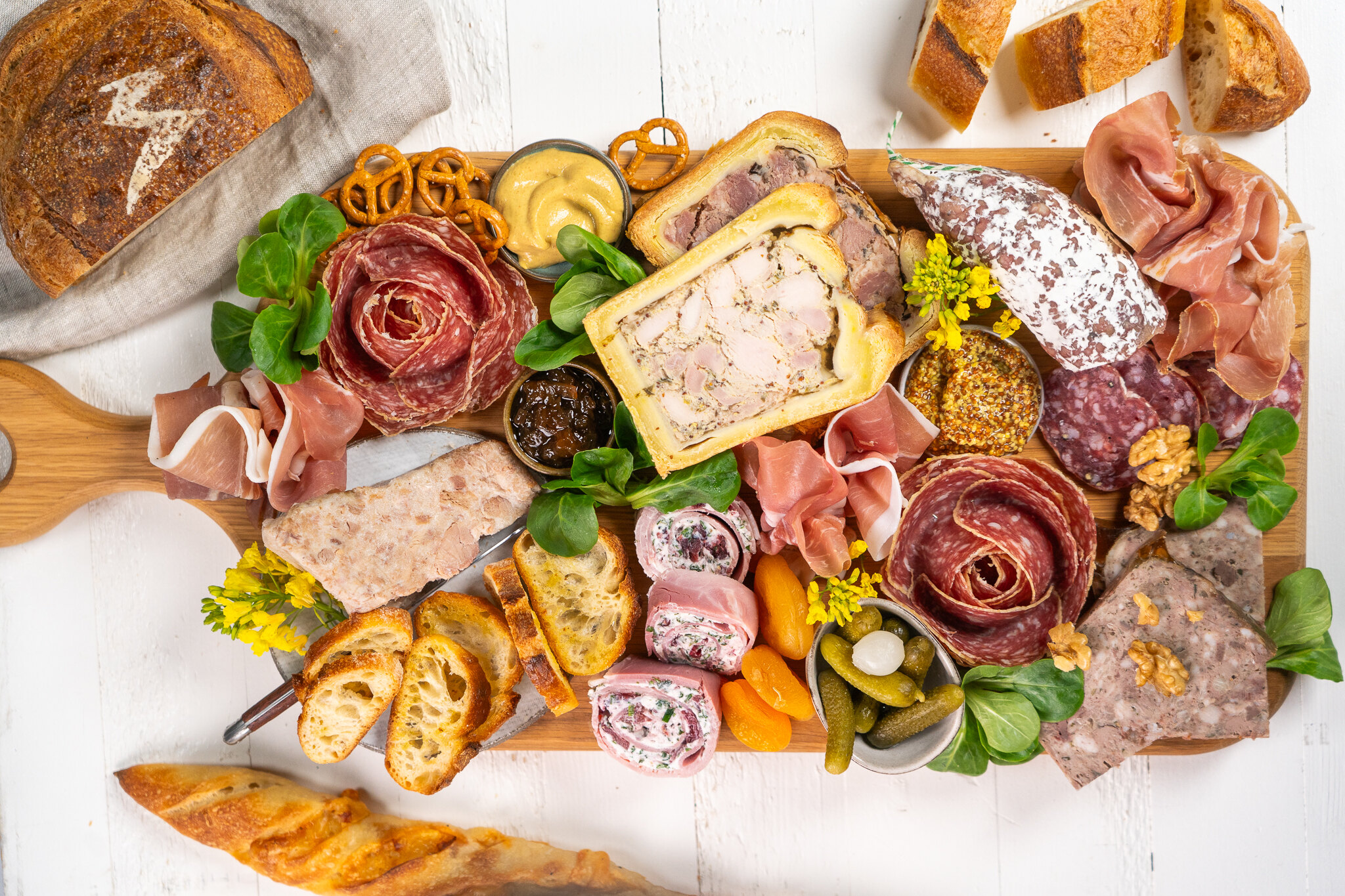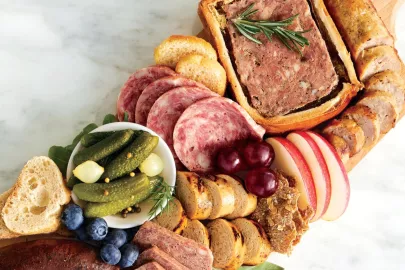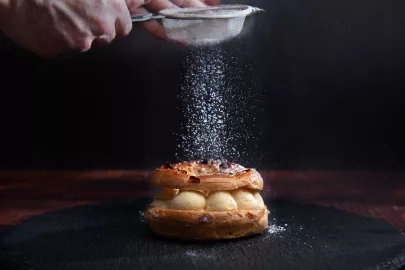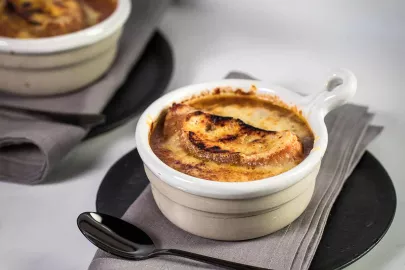When it comes to pre-dinner drinks, the French have perfected the art. Unlike the traditional American happy hour with its focus on cheap beer, fried foods, and bottom-shelf liquor, the French apéro features sophisticated drinks and thoughtfully curated snacks, making it the perfect transition to dinnertime. Want to bring the joy of a refined post-work apéro to your home? Follow these steps to host the perfect French-inspired apéro.

What Is Apéro?
Apéro is a time to share drinks and light snacks with friends. Unlike American happy hours, French apéros start later, last longer, and offer a different selection of food and drinks.
Where Should I Host An Apéro?
Apéros are usually hosted at home. The French love the outdoors, so hosting in a backyard, on a patio, or even a small balcony is ideal. Fresh air and refreshing drinks make a perfect combination.
Less is More
The French prefer a simple, unfussy setup for apéros. Open a folding chair or bistro set, drape a chic tablecloth, and add a vase of fresh flowers. In the world of apéro ambiance, less is more.
A Bit Late, But Well Worth the Wait
Unlike American happy hours which can begin as early as 4PM, French apéros typically don’t start off until 6 PM or so. Apéros can last anywhere from 1 to 3 hours and easily carry you into dinner — a sure sign that the company (and drinks) are both equally delightful!
So, What’s to Drink?
Classic apéro drinks are typically quite low-alcohol and slightly bitter, ideal for sipping during those couple of hours in-between hours. Different variations of spritz, Suze & tonic, kir, or a simple coupe de Champagne are traditional choices. For a classic apéro beverage with a bit more punch, try pastis, the signature anise-flavoured drink from the south of France. Crisp bottles of white wine like Sauvignon Blanc, Muscadet, Chablis, or thirst-quenching rosé are also perfect for an apéro. If you prefer beer or red wine, those are great choices too. The key is to drink what you love!
Snacks are Key for a Successful Apéro
No apéro is complete without snacks. For a quick gathering, you can simply provide the basics like olives, nuts, radishes, and cornichons. To take your spread to the next level, serve a crisp pain de campagne with salted butter, creamy cheese, and paté. Dried sausages (the famous saucisson), terrine, and duck rillette are some other classic French favorites. If you’re up for it, make homemade gougères, savory tartines or even savory cakes. Feeling fancy? Tinned caviar and raw bar favorites will impress your guests (and we’re pretty sure will guarantee they return!)
Other Aperitif Food Ideas to Inspire You
Looking for more apéro food inspiration ? We’ve got you covered! Here are a few other typical French snacks you can make to delight your guests at your next apéro :
- Try serving tapenade with crusty bread, marinated olives, sliced saucisson, or delicate canapés topped with smoked salmon.
- Freshly baked quiches, roasted nuts, stuffed cherry tomatoes, and deviled eggs make great additions too.
- For a touch of elegance, you can include foie gras on toast points, mini croque-monsieurs, or a selection of artisanal cheeses.
Create an Ambiance
While food and drink are important, the main purpose of an apéro is to relax and catch up with friends. Create a cozy ambiance with soft lighting and comfortable seating. Play light background music, but keep it at a low volume, since conversation is key—soft jazz is our go-to pick for apéro playlists!
The Party That Never Ends
The best apéros are the ones that go all night. Weeknight apéros are often cut off due to dinners, bedtimes, or other obligations. When it comes to weekend apéros however, the party knows no limits.
Should you happen to find yourself at a delightful outdoor apéro with a French-inspired ambiance, tasty drinks, and great company, don’t hesitate to let it run its course—even if it means skipping your dinner plans.
Apéro Through Time: A History of French Social Eating
The apéro, though seemingly simple, has a rich history that mirrors the evolution of French social life. Let’s go back in time and see how this beloved tradition has changed over the centuries.
Ancient Times
The apéro goes back to Roman times with the gustatio, a little snack before a big meal. These early habits are the foundation of the pre-dinner rituals we see in France today.
Medieval Changes
As society evolved during the Middle Ages, so did communal eating habits. Guilds, religious festivals and new ingredients shaped how people shared meals and socialized.
From Absinthe to Pastis
The Belle Époque saw the rise of cafés and made aperitifs like absinthe—and later, pastis—wildly popular. These drinks became cultural icons, loved by artists, writers, and anyone with a taste for something special.
The Modern Apéro
Today’s apéro has adapted to fit modern lifestyles. Despite globalization and convenience food, the essence of the apéro—socializing and connecting over good food and drink—remains the same.
How to Apéro: Connecting on a Deeper Level
At the heart of the apéro is conversation. It’s not just about what’s on the table, but how you connect with the people around it. Here’s how to make your apéro more meaningful.
The Setting
The relaxed, casual atmosphere of apéro lends itself to open and easy conversation. The right ambiance, soft lighting and background music creates a perfect space where real conversations can happen.
Go Beyond Small Talk
Get beyond the usual small talk with conversation starters that lead to interesting discussions. Culture, current events, personal interests or shared experiences can lead to deeper connections.
Listening
Active listening is the key to meaningful conversations. Be present, ask good questions, engage with empathy and curiosity. This will help build deeper understanding and stronger connections.
Unplug and Reconnect
Use the apéro as a chance to unplug from technology and focus on the people around you. Put away your devices and have face to face, authentic and meaningful conversations.

